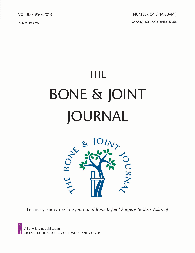
Foot & Ankle
The Hohmann and Lapidus procedures are comparable for long-term hallux valgus outcomes
This report has been verified
by one or more authors of the
original publication.
Bone Joint J. 2013 Sep;95-B(9):1222-6
87 patients (101 feet) aged 16 to 63 years, suffering from hallux valgus were randomized to evaluate the efficacy of the Lapidus procedure against the Hohmann procedure for long-term results, and to assess the implications of a hypermobile first tarsometatarsal joint (TMTJ-1). Hypermobility of the TMTJ-1, pain, function, measurement of the hallux valgus angle and forefoot, as well as patient satisfaction were all collected from randomized patients and evaluated over 8 to 11 years. The evidence indicates that the two treatments are comparable for long-term hallux vallgus outcomes, and that the presence or absence of a hypermobile first tarsometatarsal joint (TMTJ-1) made no differences to these outcomes.
Unlock the full article
Get unlimited access to OrthoEvidence with a free trial
Start TrialCritical appraisals of the latest, high-impact randomized controlled trials and systematic reviews in orthopaedics
Access to OrthoEvidence podcast content, including collaborations with the Journal of Bone and Joint Surgery, interviews with internationally recognized surgeons, and roundtable discussions on orthopaedic news and topics
Subscription to The Pulse, a twice-weekly evidence-based newsletter designed to help you make better clinical decisions
Exclusive access to original content articles, including in-house systematic reviews, and articles on health research methods and hot orthopaedic topics
Or continue reading this full article
Register Now

Subscribe to "The Pulse"
Evidence-Based Orthopaedics direct to your inbox.





































